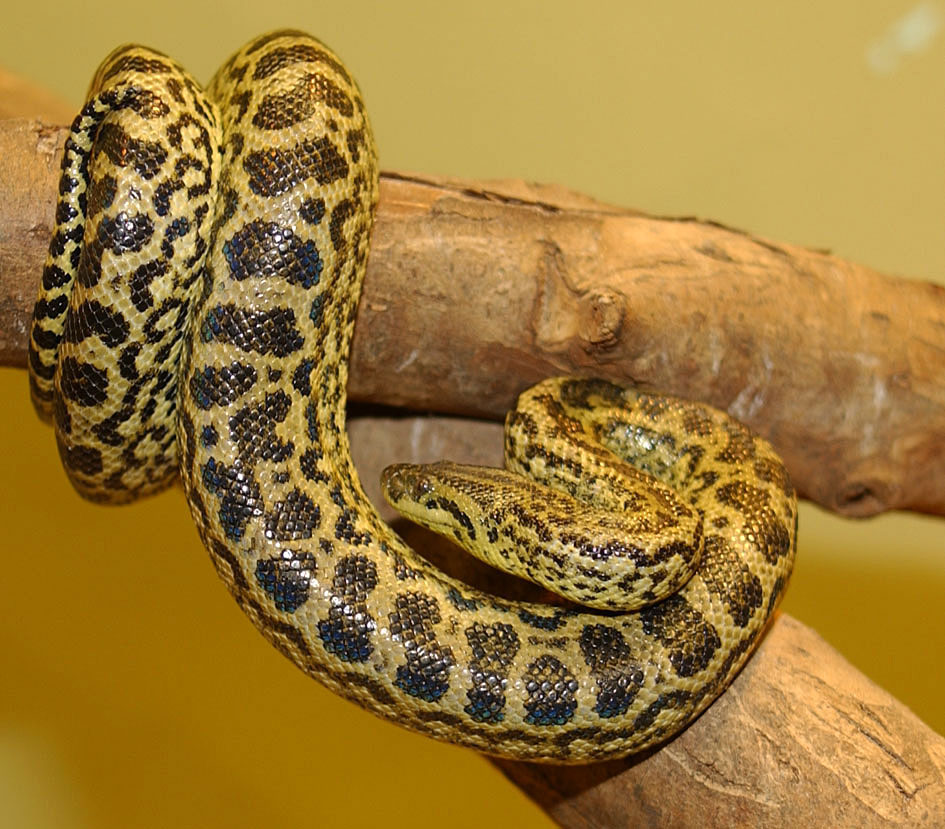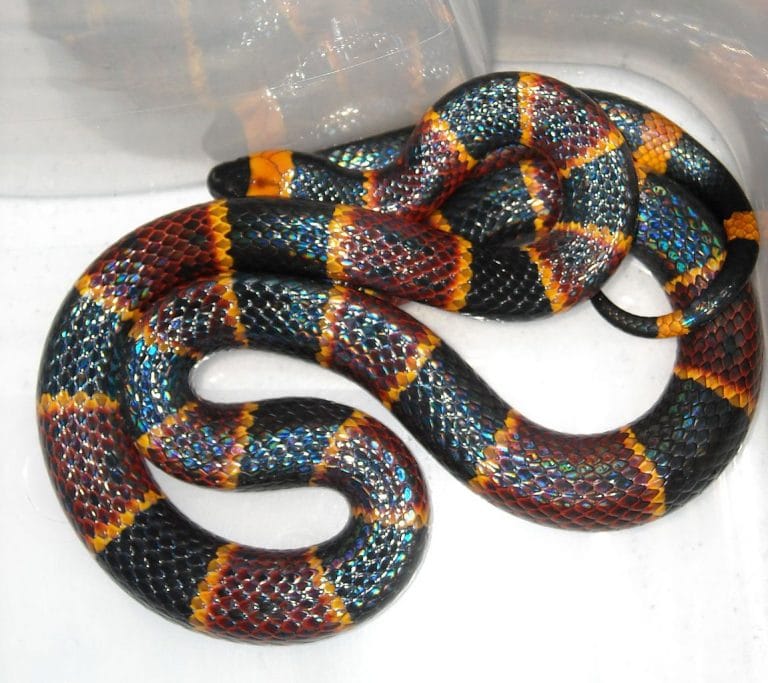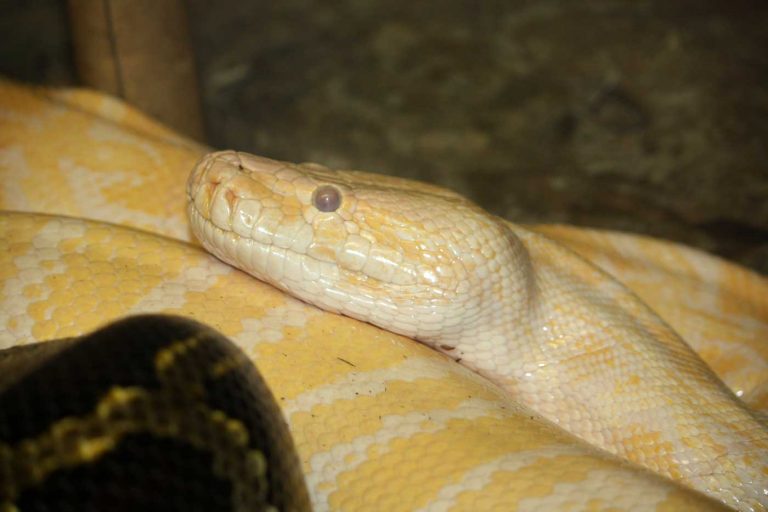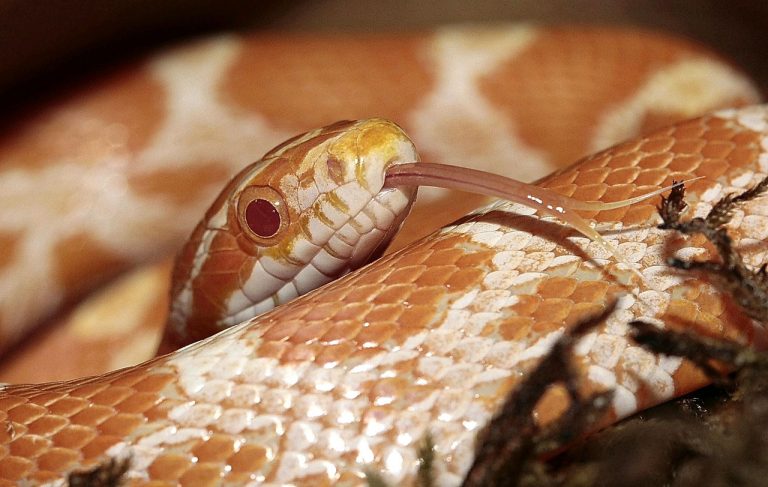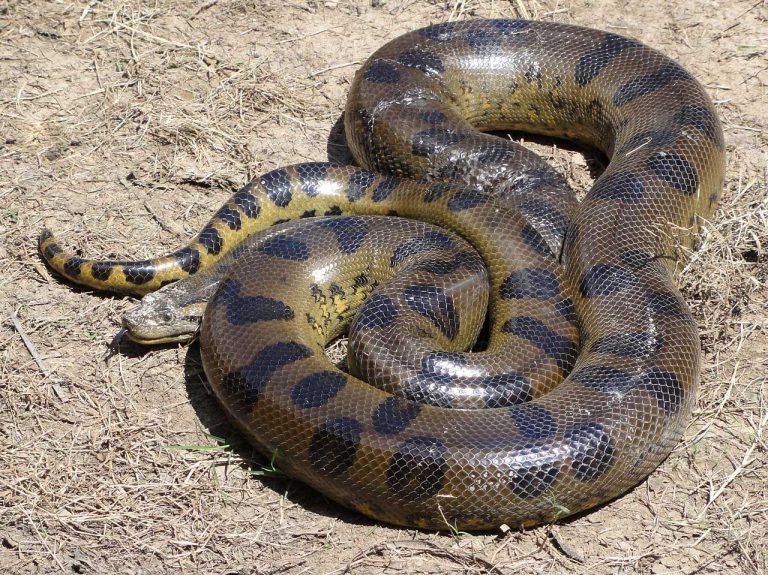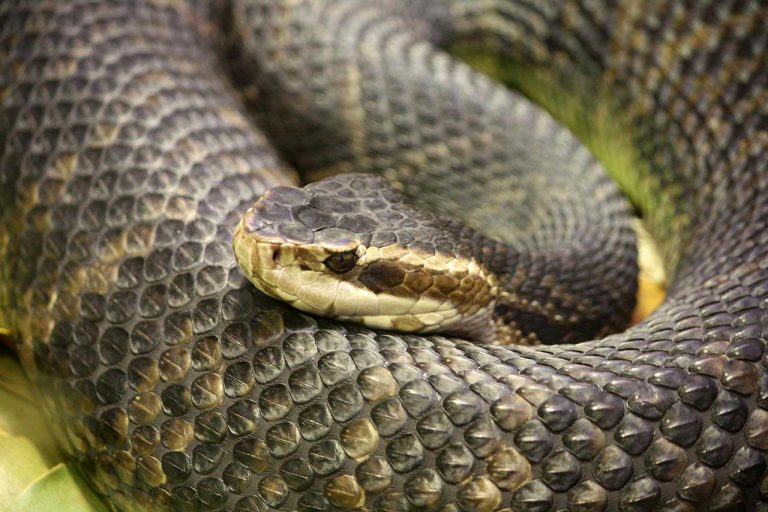Anaconda: Secret Lives of Earth’s Largest Snakes
Does the name Anaconda send chills down your spine? Some movies have projected the snakes as arch villains, ready to swallow people at the drop of a hat. Here are the facts about anacondas.
Anacondas are non-venomous snakes belonging to the species Eunectes Murinus. They are native to the tropical regions of South America. They are very large snakes. Even though the name anaconda can apply to a large snake group, it has come to refer only to green anacondas or common anacondas as they are usually called.
Scientific Classification
| Kingdom: | Animalia |
| Phylum: | Chordata |
| Subphylum: | Vertebrata |
| Class: | Reptilia |
| Order: | Squamata |
| Suborder: | Serpentes |
| Family: | Boidae |
| Subfamily: | Boinae |
| Genus: | Eunectes |
| Species: | E. murinus |
| Binomial name: | Eunectus murinus |
Some Green anacondas grow in excess of 8.8 meters (29 feet), and weigh 227 kilograms or 550 pounds, with a 30 centimeters (12 inches) girth. Females are always larger, and all other species of Anaconda are smaller than the Green Anaconda. The biologists attribute their mammoth size to their consumption of deer, wild pigs, Caimans, Jaguars, capybara and the like.
These Green Anacondas belong to the species Eunectes murinus. They are the largest snakes in the world. These large reptiles live by the side of rivers and water bodies in the tropical regions of South Africa. Anacondas are non-venomous snakes. They are frequently called water boas, since they belong to the boa family.
You can classify them as given below:
- The Green Anaconda or Eunectes Murinus, represents the largest of the species. You can find them in Venezuela. Columbia, Ecuador, the Guinas, Bolivia, Brazil, Peru, Trinidad and Tobago
- The Yellow Anaconda, or Eunectes Notaeus, is smaller. You can find them in northeastern Argentina, Paraguay, south of Brazil, and eastern Bolivia.
- The Darkly Spotted Anaconda or Eunectes Deschauensee is rare, but you can find them in the coastal areas of French Guiana and the northeastern parts of Brazil.
- The Bolivian Anaconda, or Eunectes Beniensis has only recently been classified. You can find them in the Bolivian regions of Pando and Beni.
- The Giant Anaconda, of course, said to be of mammoth proportions, you can relegate to the myths that claim of their existence in South America.
Anatomy of an Anaconda
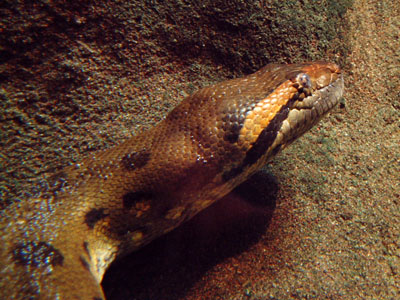
The giant anaconda has an average length of 17 feet or 5 meters. Some green anacondas grow to more than thirty feet long and around three feet in the middle. They sport black dots on an olive green background. The yellow anacondas are smaller than the green anacondas. They have yellowish green color as well as irregular black marks.
You can find Anacondas not only with rows of black spots on a greenish brown background, but also white markings, albeit small, on the sides. Nostrils are located on the top portion of the snout. This allows the anaconda to breathe easily. Even though the scaly skin appears to glisten, when you touch it, you find it is dry. When underwater, it smells with its tongue. The anaconda has no fangs.
Behavior
Anacondas are basically very shy. They retreat rather than confront their enemies. When at bay, Anacondas do not hesitate to bite. When you consider their enormous size as well as weight, they could pose a threat to humans.
Habitat
The anaconda inhabits slow moving streams, marshes, and swamps in the rain forests of the tropical Amazon and the Ornici basins. Do not mistake their clumsy terrestrial movements as they are extremely quick and streamlined in the water. Because of their nasal and eye openings situated on the dorsal side of their head, they can stay almost submerged in water, while waiting to ambush their prey.
Anaconda As a Pet
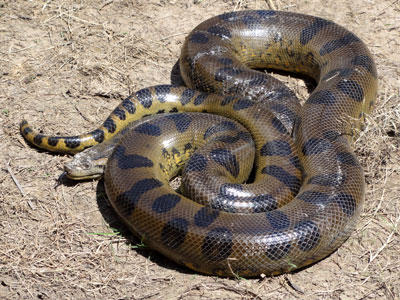
Breeding
While male anacondas reach sexual maturity at around 18 months, females usually have to wait for 3.5 to 4 years to become sexually mature. You have to ensure that you feed the female heavily since she will not eat during the period of gravidity (pregnancy). Some females stop eating right after mating. Most female anacondas will continue eating till they ovulate.
They may have to go without food for almost a year. They lose a lot of weight during this period, but they regain their weight very fast after giving birth. Anacondas do not lay eggs. They give birth to young ones, 10 to 50 at a time. The babies do not start feeding till they have the fist shed off their skin.
The breeding season starts in the fall – adjusting the photoperiod (exposure time to light), misting with warm water in the mornings, and lowering the temperature to 68 to 70 F at night will stimulate mating. You should introduce the male to the female cage. It is important to leave him with the female until he completely loses his interest; this may take several months.
If the male is not interested, you can consider introducing a second male to stimulate the mating behavior. The gestation period is 115 – 135 days. The female will need a basking spot of 98F and will spend a lot of time under it. About a week before birth, she will defecate and may do so daily after this. The last two days she has become very restless. The birth itself may last several hours.
Housing
You will need an enclosure, the size of a regular room for your pet anaconda. A bathtub will do the job of a pond for your pet. You should be able to empty the pond occasionally for cleaning.
They just love the water. Your pet will soon reach the size when it will need the space that a room size enclosure provides.
It will be better to create an artificial waterfall that empties into the bathtub. This helps in keeping the humidity level high. The humidity level should be maintained between 60 to 70 percent. The ideal substrates for the enclosure could be shredded aspen, shredded newspapers or paper towels. Because of the humidity, substrates will get wet and molds will grow in the substrates. Molds will bring diseases. Shredded newspapers are the best choice.
Providing a hide box is of paramount importance. The snake will spend a lot of time in it. The hide should be easy to clean. A plastic Dog house will do the job for adults. The dog house should not have any sharp edges.
Keep the enclosure simple. Do not clutter it with artificial greenery or tree branches. After all, your snake will spend most of the time in the hide box or the tub. Otherwise, it will prefer to do some basking under the lights.
Food
In captivity, you can feed the snake with mice, when it is young. As the snake grows in size, the prey has to be correspondingly bigger. You can feed the full-grown anacondas with small pigs. The food cost of the anaconda is bound to be very high.
Anacondas are carnivores and nocturnal (active at night) creatures. They kill their prey by constricting them. Occasionally, they also drown their prey. They swallow the prey headfirst. The top and bottom jaws of the anaconda are attached by ligaments that can stretch. So they can swallow prey that is even wider than their bodies.
Snakes cannot chew their food; they just digest them with the help of strong acids present in the stomach. The diet of the anaconda in the wild ranges from fish, birds, rodents, deer and even caiman crocodiles. After they swallow a large animal, they will not eat for a long time and enjoy rest for weeks. The neonates (young ones) care for themselves right from birth and can already hunt. They are pretty defenseless against the big predators. They feed on baby birds, rodents, small fish and frogs.
Handling
When your pet anaconda grows beyond five feet, make sure that there is someone near you when you are working with it or handling it. Do not even think of handling the snake alone, when it grows beyond ten feet. You could get injured or even killed.

Having discovered a fondness for insects while pursuing her degree in Biology, Randi Jones was quite bugged to know that people usually dismissed these little creatures as “creepy-crawlies”.

